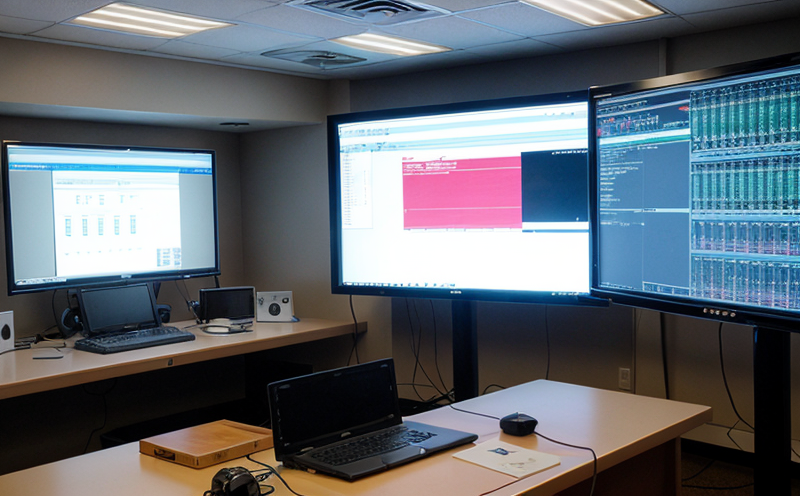EN 50128 Model-Based Testing of Railway Control Systems
The European standard EN 50128 is specifically designed for ensuring the quality and safety of railway control systems. This model-based testing approach ensures that all aspects of a system’s design, implementation, and verification are rigorously scrutinized to prevent failures in critical applications such as traffic control, signaling, and interlocking.
The standard emphasizes the importance of using models to represent the behavior of software components within railway control systems. These models serve multiple purposes: they facilitate communication between stakeholders, ensure consistency across different stages of development, and provide a robust framework for testing and validation. The testing process involves simulating real-world scenarios to identify potential issues early in the development lifecycle.
Model-based testing (MBT) is particularly advantageous because it allows engineers to explore various system configurations and edge cases that might not be apparent through traditional testing methods. By leveraging formal verification techniques, MBT helps reduce the risk of undetected errors, which could have severe consequences in railway applications where reliability and safety are paramount.
The EN 50128 standard provides a structured approach to model-based testing, specifying requirements for the development process, the creation of models, and the execution of tests. This ensures that all aspects of the system—software, hardware, and human interaction—are covered comprehensively. The use of formal methods in MBT aligns with the stringent safety standards required in railway applications.
One key aspect of EN 50128 is its emphasis on traceability. Traceability ensures that every requirement can be traced back to a specific part of the system, and vice versa. This enhances the transparency of the development process and facilitates easier debugging and maintenance. The standard also stresses the importance of maintaining documentation throughout the lifecycle of the system.
Another critical component of EN 50128 is its requirement for ongoing validation and verification. Continuous testing ensures that any changes made to the system do not introduce new issues or exacerbate existing ones. This iterative approach helps maintain the integrity of the railway control systems over their operational lifetime.
| Use Case | Description |
|---|---|
| Simulation of Train Movements | Testing scenarios involving different train movements to ensure safe and efficient operation. |
| Interlock Testing | Verifying the correct interaction between signaling systems and interlocking devices. |
| Emergency Situations | Evaluating how the system responds in critical emergency situations. |
The testing process involves several steps, including model creation, test case generation, execution of tests, and analysis of results. Each step is meticulously planned to ensure that all potential issues are identified early in the development cycle. This proactive approach not only enhances system reliability but also reduces costs associated with post-deployment issues.
Model-based testing is particularly effective for complex systems like those used in railway control. The ability to simulate various scenarios and edge cases provides a comprehensive understanding of how the system behaves under different conditions. This ensures that the system meets all required safety and performance criteria before deployment.
Why Choose This Test
The EN 50128 standard is internationally recognized, ensuring that your tests meet global standards for railway control systems.
It provides a structured approach to testing, which enhances the reliability and safety of railway control systems.
The use of models ensures clear communication between stakeholders and reduces the risk of misunderstandings.
Continuous validation and verification ensure that any changes do not introduce new issues into the system.
The EN 50128 standard is particularly beneficial for organizations that need to comply with international regulations. By adhering to this standard, you can ensure that your railway control systems meet all necessary safety and performance criteria. The structured approach provided by EN 50128 also enhances the reliability of these critical systems, ensuring safe and efficient operations.
The use of models in testing allows for clear communication between stakeholders, reducing the risk of misunderstandings. This is especially important in complex railway systems where multiple components must work seamlessly together. The structured approach provided by EN 50128 ensures that all aspects of the system are covered comprehensively, enhancing reliability and safety.
Continuous validation and verification ensure that any changes made to the system do not introduce new issues or exacerbate existing ones. This iterative approach helps maintain the integrity of the railway control systems over their operational lifetime. By adhering to EN 50128, you can be confident that your systems meet all necessary safety and performance criteria.
Environmental and Sustainability Contributions
The use of model-based testing in railway control systems contributes significantly to environmental sustainability. By identifying potential issues early in the development cycle, this approach minimizes the need for extensive redesigns or rework post-deployment. This not only reduces waste but also lowers overall production costs.
Additionally, EN 50128 promotes a structured and methodical approach to testing, which enhances the reliability of railway control systems. Reliable systems contribute to more efficient operations, reducing energy consumption and emissions associated with unnecessary system downtimes or failures. The standard’s emphasis on continuous validation and verification ensures that any changes made do not introduce new issues into the system, further enhancing its longevity and efficiency.
The structured approach provided by EN 50128 also enhances the reliability of railway control systems, contributing to more efficient operations and reduced energy consumption. Reliable systems are less prone to failures, which can lead to increased fuel usage and emissions from emergency response vehicles. By adhering to this standard, you can help minimize these environmental impacts.





